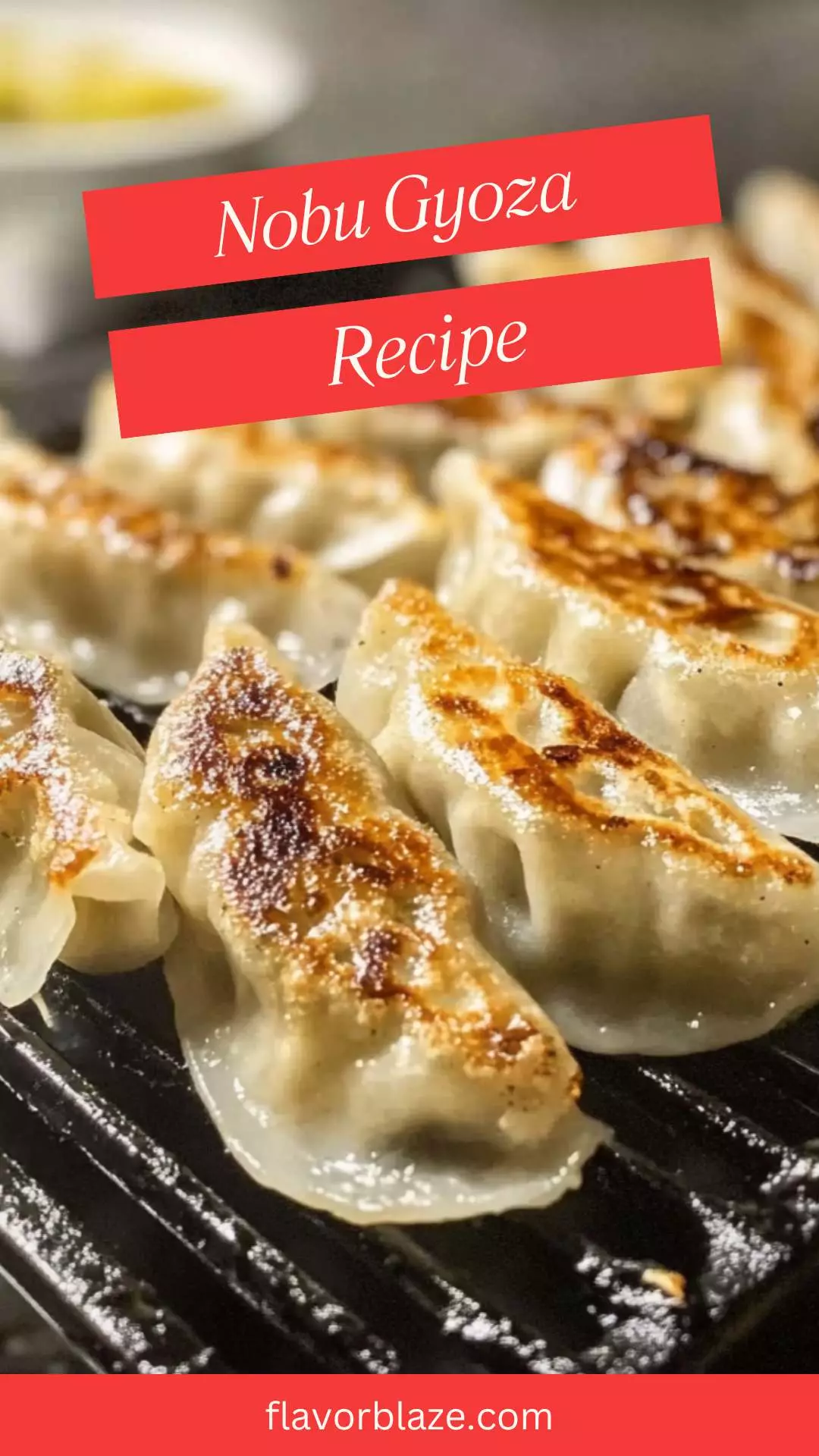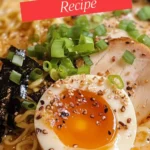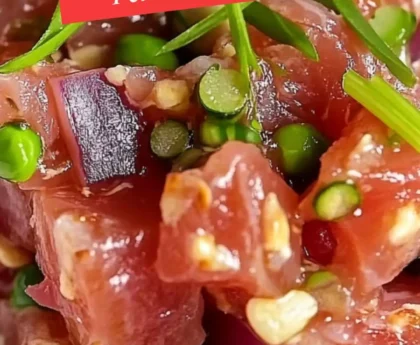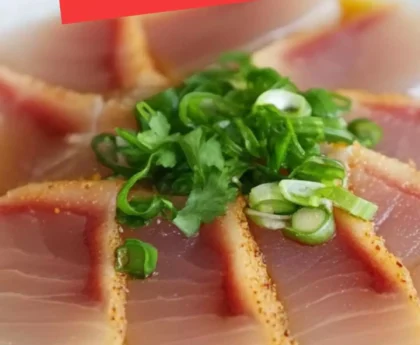When you think about gyoza, the dishes that come to mind are probably a warm bowl of ramen or a side of stir-fried vegetables. But let me throw an idea your way: how about a refreshing cucumber salad or a cup of hot miso soup?
Pairing gyoza with these sides enhances the meal, adding textural contrast and balancing flavors. On a sunny day, a chilled sake or a light, crispy beer could perfectly complement the savory goodness of gyoza.
Let’s dig into the world of Nobu Gyoza, a dish that elevates traditional dumplings into a culinary experience worth savoring.
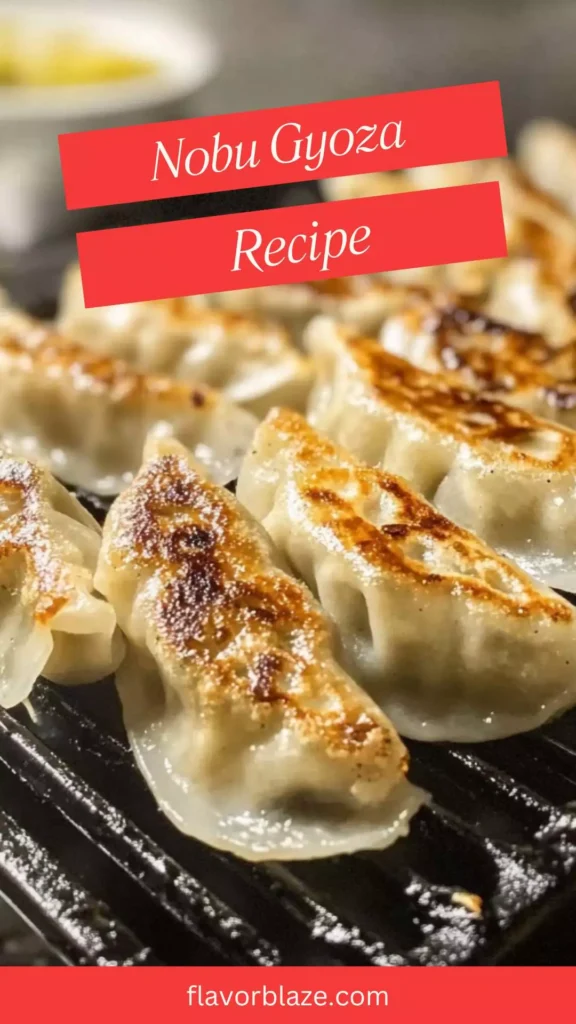
I can vividly recall my first encounter with gyoza. The soft, crisp texture was amazing. The aroma was inviting. I was hooked. Finally, in my culinary adventures, I stumbled upon a gem called Nobu Gyoza. Inspired by the famous Nobu restaurant, it’s a delightful twist on a classic.
Nobu Gyoza isn’t just food; it’s a story on a plate. For anyone craving comfort food or wanting to impress at dinner parties, this is it. Plus, it’s straightforward to make.
What Is Nobu Gyoza?
Nobu Gyoza has its roots in Japan but takes inspiration from various culinary traditions. While standard gyoza usually features a whole range of fillings, the Nobu version stands out. This dish often combines succulent pork and fresh vegetables wrapped in delicate dough. It’s pan-fried to yield a delightful contrast between the crispy base and the heavenly filling.
Typically served with a dipping sauce, this dish embraces the balance of flavors and textures. Each bite transports you to a tranquil Japanese garden where flavors dance, and memories are made.
What Is the Flavor Profile of This Dish?
Picture this: A harmonious blend of savory and slightly sweet notes dances across your taste buds. The touch of ginger adds a hint of warmth, while the soy sauce provides that umami hit we all crave.
The vibrant garlic chives bring freshness, and the cabbage adds crunch. Add a splash of chili oil in your dipping sauce, and you’re in flavor town!
The Nobu Gyoza experience is about balance. It’s rich without being overwhelming. Each bite is an invitation to taste something special.
What Makes This Recipe Different from Other Nobu Gyoza?
The charm of Nobu Gyoza lies in its simplicity and depth. While many chefs may complicate the filling with numerous spices and ingredients, this recipe focuses on high-quality, fresh components. The primary difference is the use of specific ratios and techniques to achieve the perfect bite.
My version emphasizes the importance of freshly chopped vegetables and the right meat-to-vegetable ratio. This approach ensures juiciness while retaining a lightness that gyoza should embody. Compared to other recipes, this one shines with its straightforwardness. No need for mysterious ingredients that might scare off novices!
Ingredients You’ll Need
To make Nobu Gyoza, you’ll gather the following:
Filling:
- 1 lb (500g) ground pork (with a bit of fat for juiciness)
- 1 1/2 cups finely chopped green cabbage
- 1 cup finely chopped garlic chives
- 1 teaspoon freshly grated ginger
- 1 garlic clove, minced
- 2 teaspoons soy sauce
- 1 teaspoon sesame oil
- 1 tablespoon cornstarch
- 1 teaspoon salt, divided
Gyoza:
- 1 teaspoon cornflour (for dusting)
- 40 – 45 round wonton wrappers
- 3 tablespoons vegetable oil (or your preferred oil)
Dipping Sauce:
- Soy sauce
- Rice wine vinegar
- 1 teaspoon chili oil (Rayu is wonderful)
- 1/2 teaspoon honey (for sweetness)
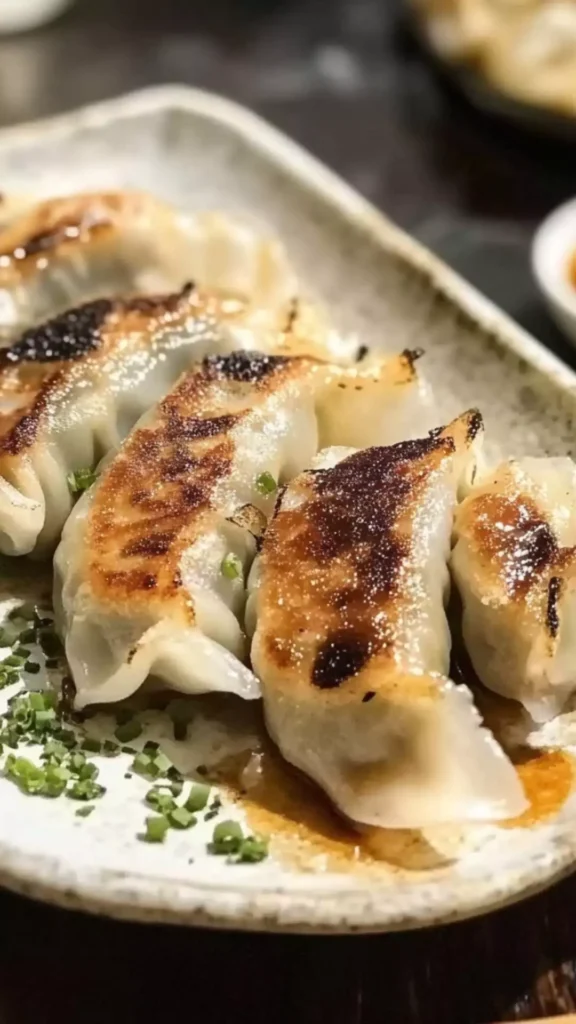
Step-by-Step Directions
Step 1: Preparing the Filling
Start by mixing the ground pork, chopped cabbage, garlic chives, grated ginger, minced garlic, soy sauce, sesame oil, cornstarch, and half of the salt in a large bowl. This step is where the magic begins!
Use your hands to combine everything thoroughly. Get in there like you mean it. You want the mixture to be sticky, holding together and ensuring even distribution of flavors.
Step 2: Assembling the Gyoza
Take a gyoza wrapper and place about a tablespoon of filling in the center. Don’t overfill!
Moisten the edges of the wrapper with a bit of water. This helps seal the gyoza. Fold the wrapper in half and pinch the edges together. You can create pleats if you’re feeling fancy, or just make sure they are sealed completely to avoid any leaks while cooking.
Step 3: Cooking the Gyoza
Heat vegetable oil in a non-stick pan over medium heat. Once hot, add the gyoza in a single layer, ensuring they don’t touch each other. Pan-fry for about 2-3 minutes, or until the bottoms are golden brown.
Next, carefully add about a half cup of water to the pan and cover it with a lid. Steam the gyoza for 4-5 minutes. The water will evaporate, leaving you with crispy gyoza on the bottom—perfect!
Step 4: Preparing the Dipping Sauce
While the gyoza cooks, prepare the dipping sauce. In a small bowl, combine soy sauce, rice wine vinegar, chili oil, and honey. Mix until well combined. Adjust the sweetness or spice level according to your preference.
Tips on Making Nobu Gyoza
- Make Ahead: You can prepare the gyoza in advance and freeze them. Just ensure they are laid flat on a baking sheet before transferring them to a freezer bag. This prevents them from sticking together.
- Experiment with Fillings: Don’t shy away from using different meats or vegetables! Chicken, shrimp, or tofu can work wonders.
- Don’t Overcook: The timing is key. Overcooking can lead to dry gyoza. Stick to the recommended time, and keep an eye during the water steaming phase.
- Use a Non-stick Pan: It helps prevent sticking and allows for easy flipping and removal of gyoza.
- Adjust Seasonings: If you love spice, consider adding some chopped chili to the filling. It brings a fun kick!
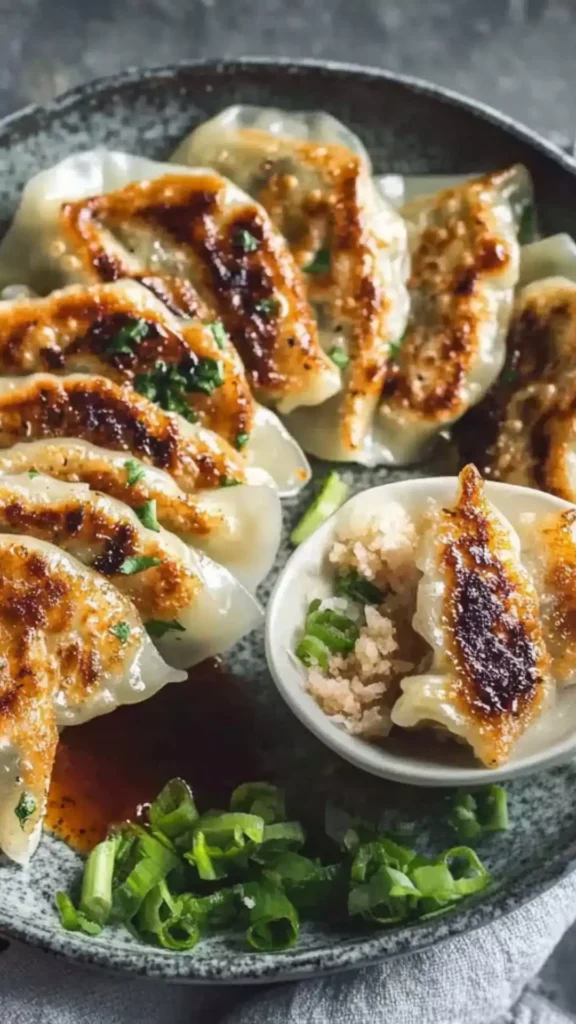
Nutrition Information
Enjoying Nobu Gyoza doesn’t mean you have to sacrifice nutrition. Here’s a rough breakdown per serving (5 gyoza):
- Calories: 250
- Protein: 15g
- Fat: 12g
- Carbohydrates: 25g
- Fiber: 2g
These dumplings pack a nutritious punch without being overly indulgent.
How Can I Store This Nobu Gyoza?
If you find yourself with leftovers (not likely, but just in case), allow the gyoza to cool completely. Store them in an airtight container in the fridge for up to three days.
When reheating, pan-fry or steam them gently to regain that crispy texture.
Substitute Options for Ingredients
If you’re missing some ingredients, don’t fret! Here are some substitutes:
- Ground Pork: Ground chicken or turkey can serve as a lean alternative. They still retain great flavor and texture.
- Garlic Chives: If you can’t find this herb, scallions or even regular chives can provide a similar taste.
- Sesame Oil: Olive oil won’t mimic the nutty taste exactly, but it works in a pinch.
- Wonton Wrappers: In a tight spot? Use spring roll wrappers cut into circles. They can still deliver a delightful texture.
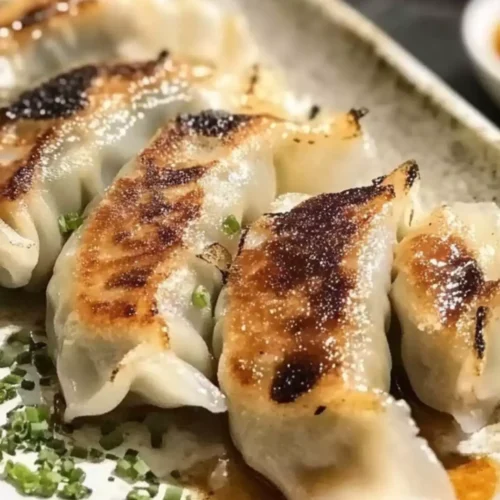
Nobu Gyoza Recipe
Ingredients
- 1 lb 500g ground pork (preferably with a bit of fat)
- 1 1/2 cups finely chopped green cabbage
- 1 cup finely chopped garlic chives Note 1
- 1 teaspoon freshly grated ginger
- 1 garlic clove minced
- 2 teaspoons soy sauce
- 1 teaspoon sesame oil
- 1 tablespoon cornstarch or corn flour
- 1 teaspoon salt divided
- 1 teaspoon cornflour cornstarch – for dusting the tray
- 40 – 45 round wonton wrappers or gyoza wrappers, about 1 1/2 packets (Note 2)
- 3 tablespoons vegetable oil or your preferred cooking oil
- Rice wine vinegar
- 1 teaspoon chili oil Rayu – a Japanese chili oil
- 1/2 teaspoon honey for a touch of sweetness
Instructions
- Start by mixing the ground pork, chopped cabbage, garlic chives, grated ginger, minced garlic, soy sauce, sesame oil, cornstarch, and half of the salt in a large bowl. This step is where the magic begins!
- Use your hands to combine everything thoroughly. Get in there like you mean it. You want the mixture to be sticky, holding together and ensuring even distribution of flavors.
- Take a gyoza wrapper and place about a tablespoon of filling in the center. Don’t overfill!
- Moisten the edges of the wrapper with a bit of water. This helps seal the gyoza. Fold the wrapper in half and pinch the edges together. You can create pleats if you’re feeling fancy, or just make sure they are sealed completely to avoid any leaks while cooking.
- Heat vegetable oil in a non-stick pan over medium heat. Once hot, add the gyoza in a single layer, ensuring they don’t touch each other. Pan-fry for about 2-3 minutes, or until the bottoms are golden brown.
- Next, carefully add about a half cup of water to the pan and cover it with a lid. Steam the gyoza for 4-5 minutes. The water will evaporate, leaving you with crispy gyoza on the bottom—perfect!
- While the gyoza cooks, prepare the dipping sauce. In a small bowl, combine soy sauce, rice wine vinegar, chili oil, and honey. Mix until well combined. Adjust the sweetness or spice level according to your preference.
Notes
- Make Ahead: You can prepare the gyoza in advance and freeze them. Just ensure they are laid flat on a baking sheet before transferring them to a freezer bag. This prevents them from sticking together.
- Experiment with Fillings: Don’t shy away from using different meats or vegetables! Chicken, shrimp, or tofu can work wonders.
- Don’t Overcook: The timing is key. Overcooking can lead to dry gyoza. Stick to the recommended time, and keep an eye during the water steaming phase.
- Use a Non-stick Pan: It helps prevent sticking and allows for easy flipping and removal of gyoza.
- Adjust Seasonings: If you love spice, consider adding some chopped chili to the filling. It brings a fun kick!
Nutrition
Frequently Asked Questions
Conclusion
Nobu Gyoza is not just a dish, but a celebration of flavors. Making them at home is a delightful journey, from preparing the filling to perfecting the cooking technique. Whether you’re enjoying them alone or sharing with friends, these gyoza will elevate your dining experience.
Take a moment to relish each bite as flavors meld and memories unfold. The next time you crave something exceptional, you can create this dish with confidence, knowing you’re serving something special. Let’s bring a piece of Japan into our kitchens—one delicious gyoza at a time!

